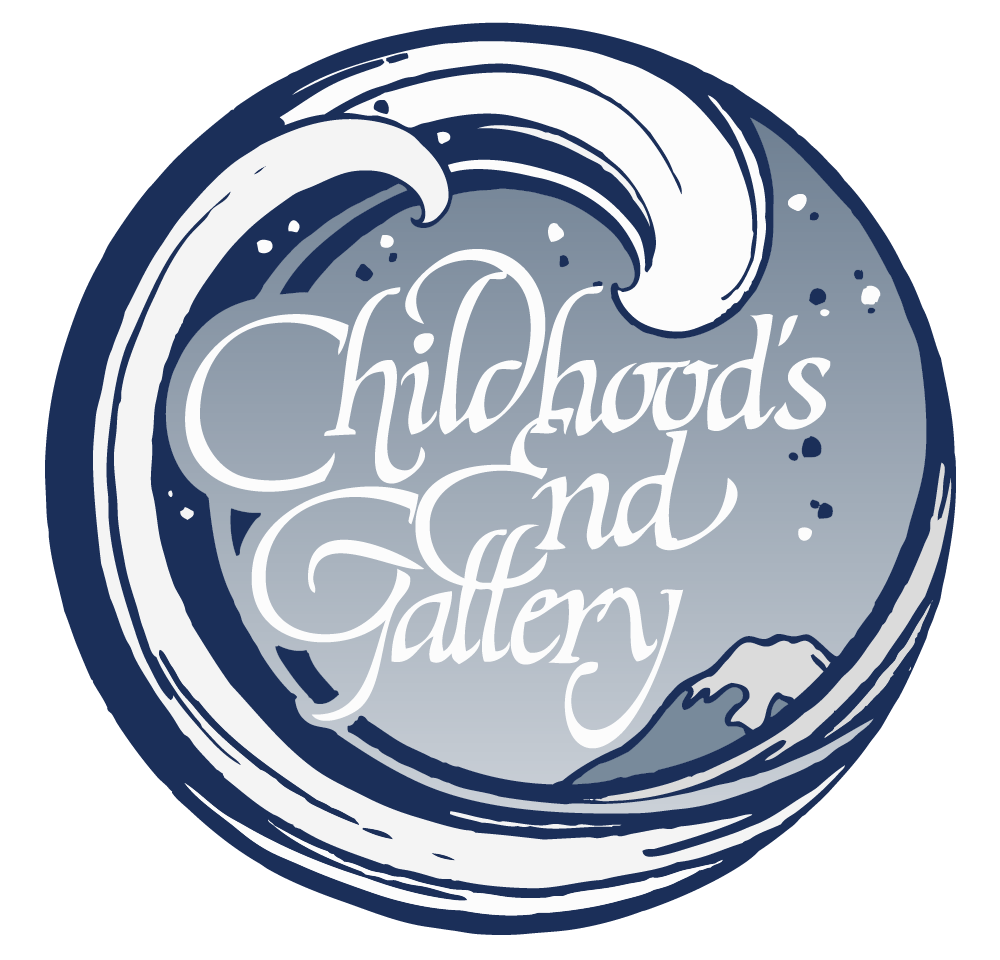Gemstones & Minerals
See also: Metals
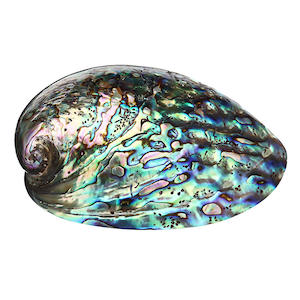




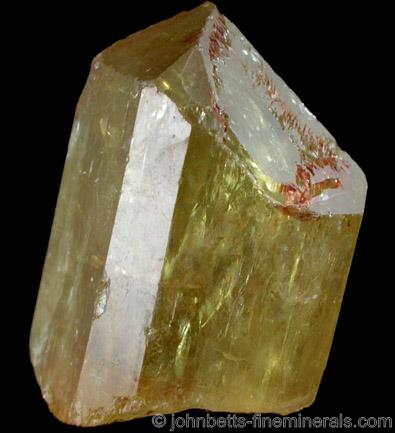
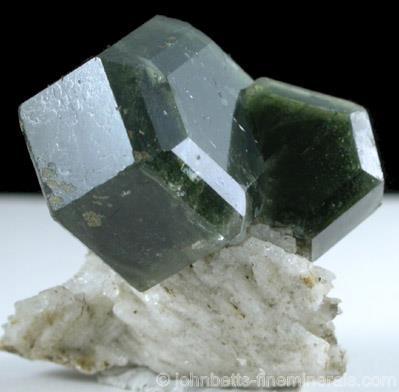
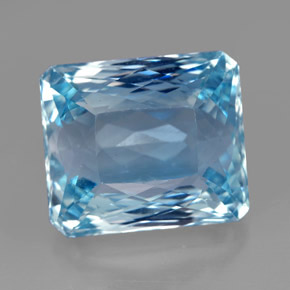

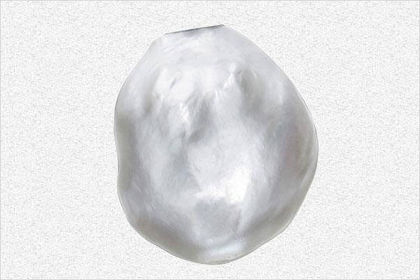

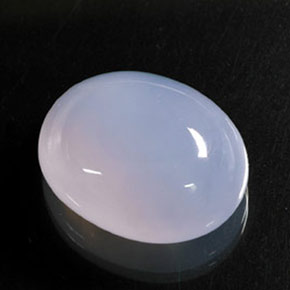
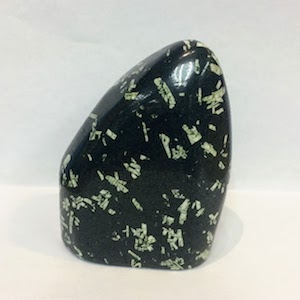
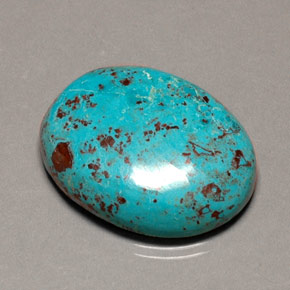
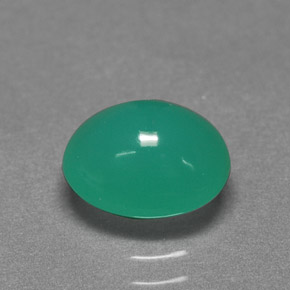
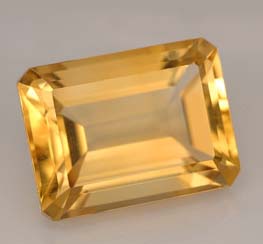

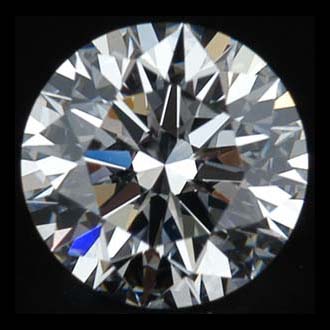

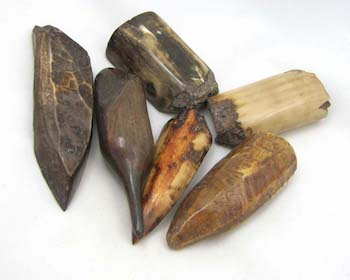
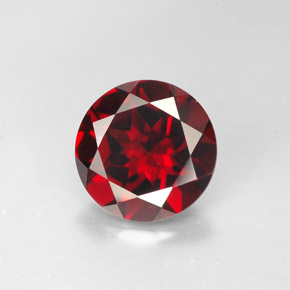
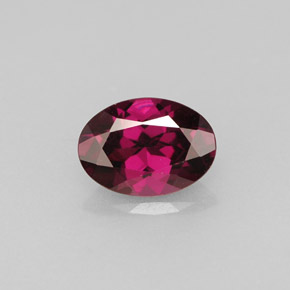
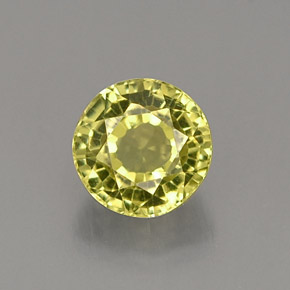
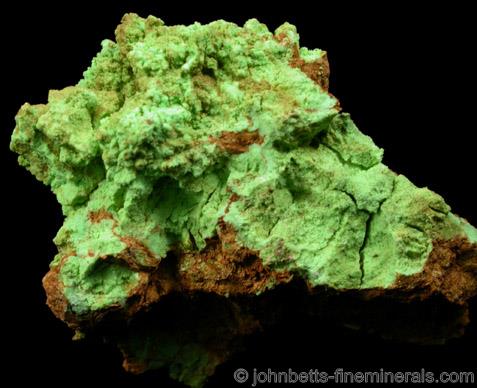
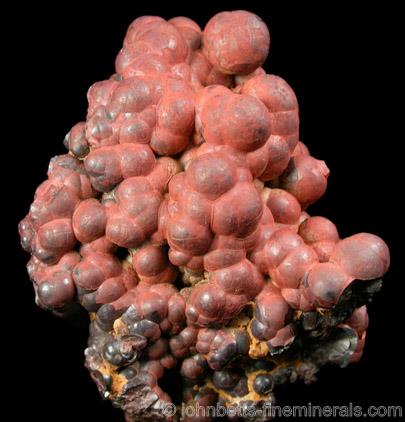
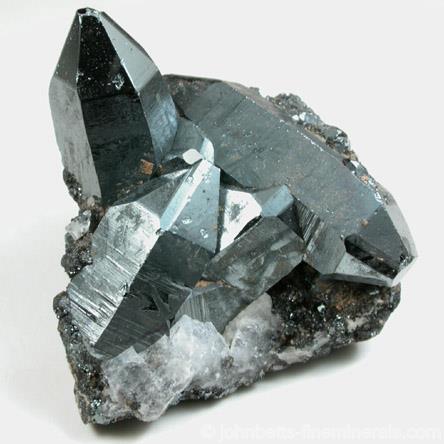

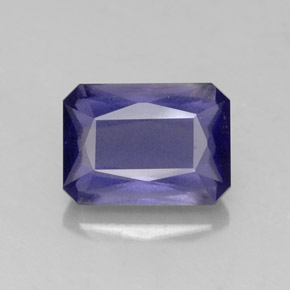
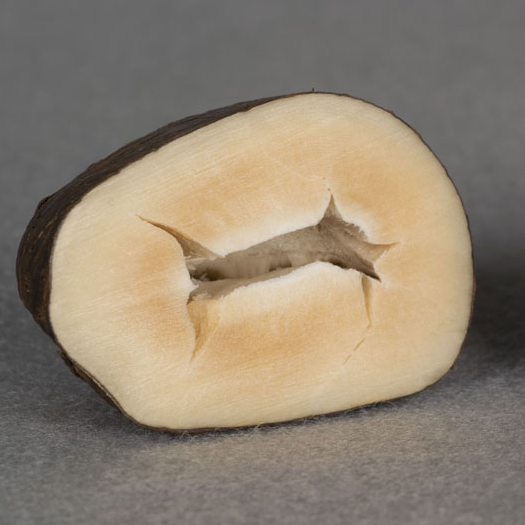
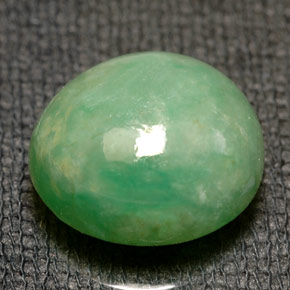
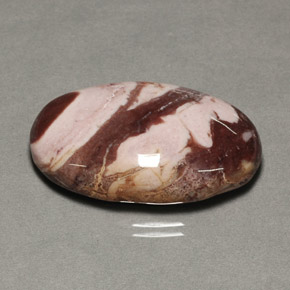

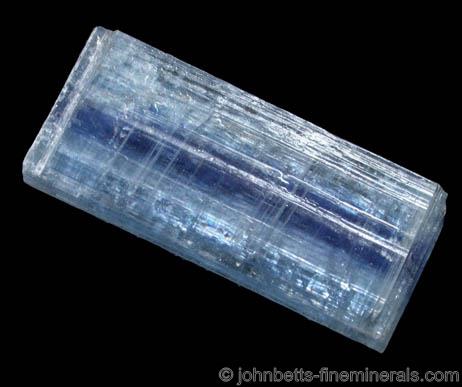
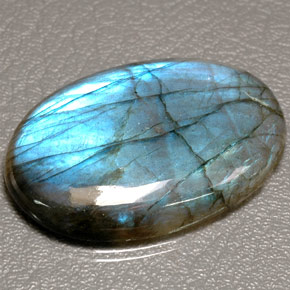
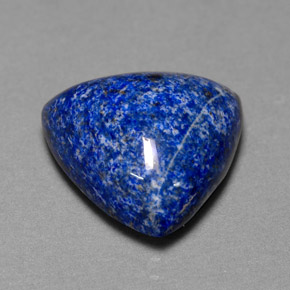
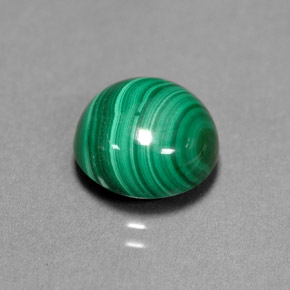
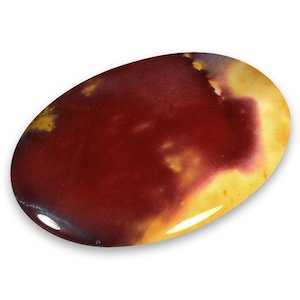
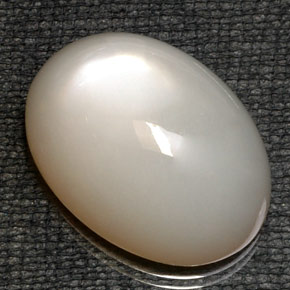


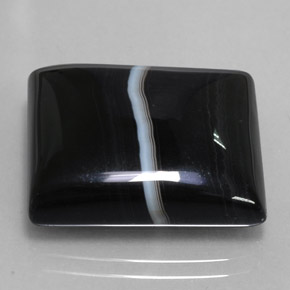

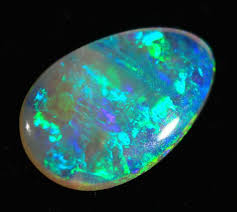
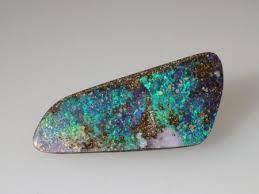
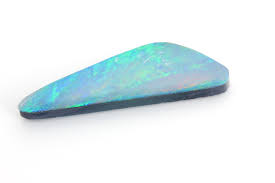
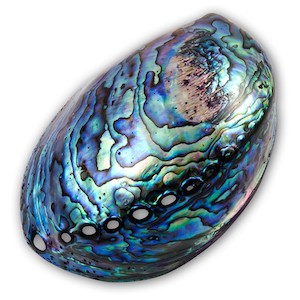




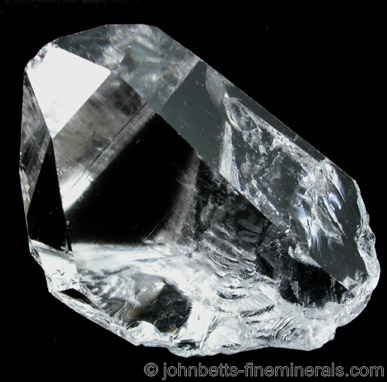
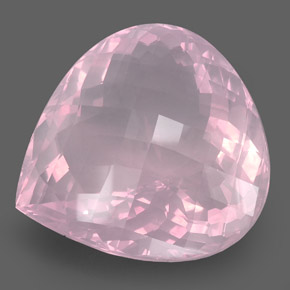

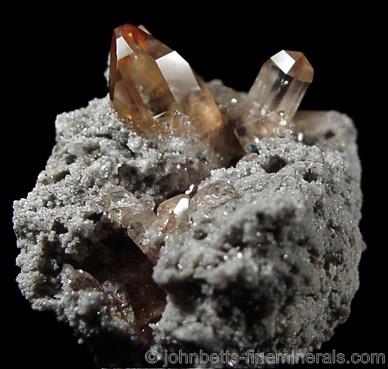


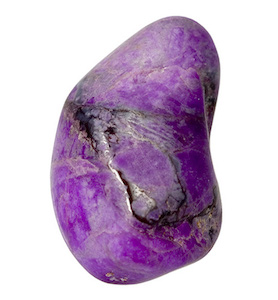
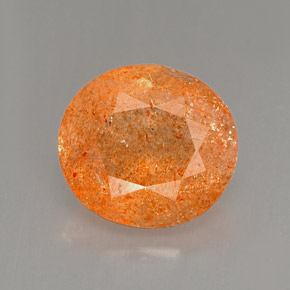

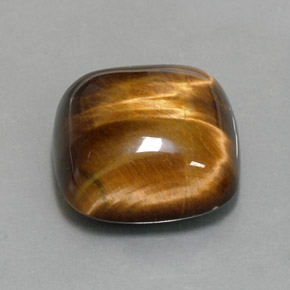
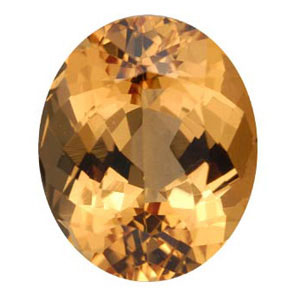
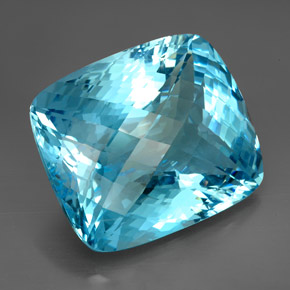

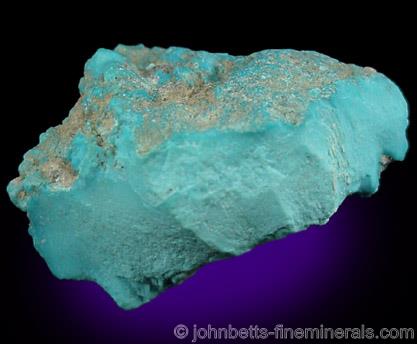
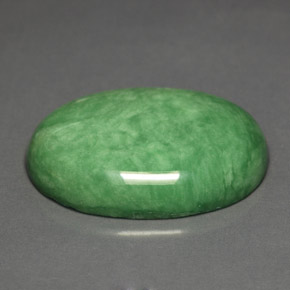

Abalone Shell
The shell of a large class of mollusks, Abalone is traditionally used in smudging ceremonies by North American Native Peoples. Eastern tradition correlates the shell's many colors with its ability to affect all the chakras of the human body. Abalone is also connected with health of the heart, the removal of fear, sorrow, and of dull or negative energies.
The shell of a large class of mollusks, Abalone is traditionally used in smudging ceremonies by North American Native Peoples. Eastern tradition correlates the shell's many colors with its ability to affect all the chakras of the human body. Abalone is also connected with health of the heart, the removal of fear, sorrow, and of dull or negative energies.

Agate
Agate, a microcrystalline variety of quartz, chiefly chalcedony, is characterized by its fineness of grain and brightness of color. Agate is considered a cooling stone that has properties to cure insomnia, promote strength and healing, protect against danger, and to ensure a healthy life.
Moh's hardness scale: 7
Agate, a microcrystalline variety of quartz, chiefly chalcedony, is characterized by its fineness of grain and brightness of color. Agate is considered a cooling stone that has properties to cure insomnia, promote strength and healing, protect against danger, and to ensure a healthy life.
Moh's hardness scale: 7

Amber
Amber is the fossilized resin of pine trees found in sedimentary deposits and on shorelines and is noted for inclusions of insects, pollen and other organic debris. We get the word "electricity" from the Greek for amber, electron. This is due to the fossilized resin's unusual electric properties. Ancient Greeks believed Amber to be solidified sunshine washed up by the sea. Amber is thought to bring luck and improve eyesight.
Amber is the fossilized resin of pine trees found in sedimentary deposits and on shorelines and is noted for inclusions of insects, pollen and other organic debris. We get the word "electricity" from the Greek for amber, electron. This is due to the fossilized resin's unusual electric properties. Ancient Greeks believed Amber to be solidified sunshine washed up by the sea. Amber is thought to bring luck and improve eyesight.

Amethyst
Amethyst, a gem of quartz which appears in a translucent light to dark purple, is the second most abundant mineral. In ancient Greece, wine goblets were often carved of amethyst because it was thought to prevent "drunkenness." Both Eastern and Western cultures have thought amethyst to encourage attributes ranging from intelligence to patience to celibacy. It is the traditional birthstone for the month of February. Amethyst lightens with long sun exposure. The color may change with heat; ultrasonic is the safest cleaning method.
Moh's hardness scale: 7
Amethyst, a gem of quartz which appears in a translucent light to dark purple, is the second most abundant mineral. In ancient Greece, wine goblets were often carved of amethyst because it was thought to prevent "drunkenness." Both Eastern and Western cultures have thought amethyst to encourage attributes ranging from intelligence to patience to celibacy. It is the traditional birthstone for the month of February. Amethyst lightens with long sun exposure. The color may change with heat; ultrasonic is the safest cleaning method.
Moh's hardness scale: 7

Ammonite
Ammonites, an extinct group of mollusks that lived 350 million years ago, get their name from the ancient Egyptian god, Ammon, who was pictured with horns behind his ears. In India the fossils are identified with the god Vishnu and are used in ceremonies. Ammonites are believed to bring prosperity, good health and luck.
Ammonites, an extinct group of mollusks that lived 350 million years ago, get their name from the ancient Egyptian god, Ammon, who was pictured with horns behind his ears. In India the fossils are identified with the god Vishnu and are used in ceremonies. Ammonites are believed to bring prosperity, good health and luck.


Apatite
Apatite is actually three different minerals depending on the predominance of either fluorine, chlorine or the hydroxyl group. Ironically, apatite is the same mineral that composes more than 60% of the bones and teeth of humans, fish, birds, and vertebrate animals. Typically the color is green. Apatite is thought to stimulate ideas and concentration, to bring love, harmony, peace, and to no surprise, appetite suppression.
Mohs hardness scale: 5.
Apatite is actually three different minerals depending on the predominance of either fluorine, chlorine or the hydroxyl group. Ironically, apatite is the same mineral that composes more than 60% of the bones and teeth of humans, fish, birds, and vertebrate animals. Typically the color is green. Apatite is thought to stimulate ideas and concentration, to bring love, harmony, peace, and to no surprise, appetite suppression.
Mohs hardness scale: 5.

Aquamarine
Aquamarine is a blue to greenish-blue variety of beryl that gets it's name from the Latin for 'sea water'. The blue of aquamarine is due to the presence of iron. Subtle differences in the shade and depth of color account for radical differences in cost. Aquamarine is a lucky stone for sailors, and legend has it that it originated from the treasure chests of mermaids. Aquamarine is thought to protect one from seasickness and to heal nerve pain, glandular problems, and toothaches. It is the traditional birthstone for the month of March.
Moh's hardness scale: 7.5-8.
Aquamarine is a blue to greenish-blue variety of beryl that gets it's name from the Latin for 'sea water'. The blue of aquamarine is due to the presence of iron. Subtle differences in the shade and depth of color account for radical differences in cost. Aquamarine is a lucky stone for sailors, and legend has it that it originated from the treasure chests of mermaids. Aquamarine is thought to protect one from seasickness and to heal nerve pain, glandular problems, and toothaches. It is the traditional birthstone for the month of March.
Moh's hardness scale: 7.5-8.

Azurite
Azurite is derived from the Persian word for blue, lazhward or the Arabic word for blue, azul . Ancient Egypt and Renaissance Europe popularized the use of Azurite as a dye for paints and fabrics. Often thought of as the "stone of heaven," azurite is traditionally related to both spiritual and physical healing. Azurite is usually found with malachite, chrysocolla or turquoise, or in areas with copper deposits.
Moh's hardness scale: 3.5 - 4.
Azurite is derived from the Persian word for blue, lazhward or the Arabic word for blue, azul . Ancient Egypt and Renaissance Europe popularized the use of Azurite as a dye for paints and fabrics. Often thought of as the "stone of heaven," azurite is traditionally related to both spiritual and physical healing. Azurite is usually found with malachite, chrysocolla or turquoise, or in areas with copper deposits.
Moh's hardness scale: 3.5 - 4.

Biwa Pearl
In 1914, farmers used native mussels to begin culturing freshwater pearls in Japan's largest and most ancient lake, Lake Biwa. At one point, "Biwa" was synonymous with freshwater pearls in general. They are irregular in shape and have good color and luster. A small square of mother of pearl is inserted into a mussel and take three years to produce good results.
Moh's hardness scale: 2.5 - 4.5.
In 1914, farmers used native mussels to begin culturing freshwater pearls in Japan's largest and most ancient lake, Lake Biwa. At one point, "Biwa" was synonymous with freshwater pearls in general. They are irregular in shape and have good color and luster. A small square of mother of pearl is inserted into a mussel and take three years to produce good results.
Moh's hardness scale: 2.5 - 4.5.

Carnelian
Carnelian, a form of Chalcedony, is a member of the quartz family. The light to dark reddish brown stone gets its name from the Latin 'corum' (cornel berry or cornelian cherry). Its red color is due to the presence of iron. It is often associated with the healing of blood disorders, infertility, and impotence. Since Carnelian was at once believed to have power in the afterlife, it is found in many ancient Egyptian tombs. In Hindu astrology, carnelian is the secondary birthstone of Scorpios. Carnelian is worn for good luck in the Near East today.
Moh's hardness scale: 6.5
Carnelian, a form of Chalcedony, is a member of the quartz family. The light to dark reddish brown stone gets its name from the Latin 'corum' (cornel berry or cornelian cherry). Its red color is due to the presence of iron. It is often associated with the healing of blood disorders, infertility, and impotence. Since Carnelian was at once believed to have power in the afterlife, it is found in many ancient Egyptian tombs. In Hindu astrology, carnelian is the secondary birthstone of Scorpios. Carnelian is worn for good luck in the Near East today.
Moh's hardness scale: 6.5

Chalcedony
Chalcedony is found all over the world and is made of either Cryptocrystalline or Microcrystalline quartz, meaning it has very small quartz crystals. Chalcedony usually refers to the light blue Chalcedony, but it can also be applied to agate, jasper, petrified wood, bloodstone, petrified dinosaur bone, tigers eye, onyx and carnelian. It is durable and takes a good polish. Chalcedony is one of humankind's earliest used minerals. The name comes from an Ancient Greek town, Chalkedon, in Asia Minor. Seals were made from this stone in Mesopotamia as early as the seventh century B.C.E. Historically and today, the stone is attributed to health, safety, and is thought to banish depression and mental illness.
Moh's hardness scale: 7
Chalcedony is found all over the world and is made of either Cryptocrystalline or Microcrystalline quartz, meaning it has very small quartz crystals. Chalcedony usually refers to the light blue Chalcedony, but it can also be applied to agate, jasper, petrified wood, bloodstone, petrified dinosaur bone, tigers eye, onyx and carnelian. It is durable and takes a good polish. Chalcedony is one of humankind's earliest used minerals. The name comes from an Ancient Greek town, Chalkedon, in Asia Minor. Seals were made from this stone in Mesopotamia as early as the seventh century B.C.E. Historically and today, the stone is attributed to health, safety, and is thought to banish depression and mental illness.
Moh's hardness scale: 7

Chinese Writing Stone
Chinese Writing Stone is a matrix limestone with andalusite crystals. The stone gets its name because the crystal formations resemble the characters in the Chinese language. Chinese Writing Stone is found in the foothills of the Sierra Nevadas in California and the Yangtze River Valley in China. Today it is considered a stone for assisting one into a dream state, accepting responsibility and adjusting to change.
Chinese Writing Stone is a matrix limestone with andalusite crystals. The stone gets its name because the crystal formations resemble the characters in the Chinese language. Chinese Writing Stone is found in the foothills of the Sierra Nevadas in California and the Yangtze River Valley in China. Today it is considered a stone for assisting one into a dream state, accepting responsibility and adjusting to change.

Chrysocolla
A minor ore of copper, chrysacolla gets its name from the Greek chrysos, meaning gold, and kolla, meaning glue. Found in the Southwest United States, Chile, Zaire, Australia, France and England. This mineral is often related to creativity, communication, female energy, tranquility, peace, and unconditional love. It is also thought to help relieve ulcers and arthritis.
Moh's hardness scale: 7
A minor ore of copper, chrysacolla gets its name from the Greek chrysos, meaning gold, and kolla, meaning glue. Found in the Southwest United States, Chile, Zaire, Australia, France and England. This mineral is often related to creativity, communication, female energy, tranquility, peace, and unconditional love. It is also thought to help relieve ulcers and arthritis.
Moh's hardness scale: 7

Chrysoprase
Chrysoprase is the rarest form of chalcedony. Trace amounts of nickel give it its apple green color although it also comes in a very dark green. Chrysoprase is found in Australia, Brazil, the Ural Mountains, and the United States. In the Middle Ages, it was believed that chrysoprase, when placed in the mouth, had the power to make one invisible. Today, chrysoprase is attributed to the healing of heartache and loneliness. It is also though to relieve gout, eye problems, and mental illness.
Moh's hardness scale: 7
Chrysoprase is the rarest form of chalcedony. Trace amounts of nickel give it its apple green color although it also comes in a very dark green. Chrysoprase is found in Australia, Brazil, the Ural Mountains, and the United States. In the Middle Ages, it was believed that chrysoprase, when placed in the mouth, had the power to make one invisible. Today, chrysoprase is attributed to the healing of heartache and loneliness. It is also though to relieve gout, eye problems, and mental illness.
Moh's hardness scale: 7

Citrine
Citrine, a transparent variety of quartz, silicon dioxide, ranges in color from yellow, yellow-brown, orange, dark orange-brown, to reddish brown. The name comes from the French word for lemon, "citron". Citrine was carried in ancient times as protection against snake venom and evil thoughts. Today, citrine is valued as a treatment against depression and is believed to stimulate memory, aid digestion and help remove toxins from the body. It also symbolizes happiness, wisdom, peace, and joy. Citrine is the official birthstone for the month of November. Its color may change with heat; ultrasonic is the safest cleaning method.
Moh's hardness scale: 7
Citrine, a transparent variety of quartz, silicon dioxide, ranges in color from yellow, yellow-brown, orange, dark orange-brown, to reddish brown. The name comes from the French word for lemon, "citron". Citrine was carried in ancient times as protection against snake venom and evil thoughts. Today, citrine is valued as a treatment against depression and is believed to stimulate memory, aid digestion and help remove toxins from the body. It also symbolizes happiness, wisdom, peace, and joy. Citrine is the official birthstone for the month of November. Its color may change with heat; ultrasonic is the safest cleaning method.
Moh's hardness scale: 7

Coral
An organic substance formed of the skeletons of marine animals, coral is composed mainly of calcium carbonate. One of the most ancient gem materials used as adornment since prehistoric times, those ranging from ancient Chinese royalty to European queens have worn coral. Coral is one of the seven treasures in Buddhist scriptures, and in many countries is a traditional gift for children. Coral has innumerable properties related to physical and mental health. Moh's hardness scale: 3-4
An organic substance formed of the skeletons of marine animals, coral is composed mainly of calcium carbonate. One of the most ancient gem materials used as adornment since prehistoric times, those ranging from ancient Chinese royalty to European queens have worn coral. Coral is one of the seven treasures in Buddhist scriptures, and in many countries is a traditional gift for children. Coral has innumerable properties related to physical and mental health. Moh's hardness scale: 3-4

Diamond
Diamond is pure carbon that crystallized under the heat and pressure of volcanic activity. It is found mainly in transparent colorless form tinged with yellow or brown but can also occur in colors such as yellow, pink, blue, green, orange, violet, brown and black. Derived from the ancient Greek for invincible, "adamas," diamond is the hardest natural mineral known to mankind. Originally used in religious icons in ancient India, the diamond has come to symbolize fearlessness, virtue, power, eternity and love. It is the traditional birthstone for the month of April.
Moh's hardness scale: 10
Diamond is pure carbon that crystallized under the heat and pressure of volcanic activity. It is found mainly in transparent colorless form tinged with yellow or brown but can also occur in colors such as yellow, pink, blue, green, orange, violet, brown and black. Derived from the ancient Greek for invincible, "adamas," diamond is the hardest natural mineral known to mankind. Originally used in religious icons in ancient India, the diamond has come to symbolize fearlessness, virtue, power, eternity and love. It is the traditional birthstone for the month of April.
Moh's hardness scale: 10

Emerald
Emerald is the green variety of Beryl found, for the majority, in Columbia, Brazil and Africa. Top quality emeralds are more valuable than diamonds and inclusions are tolerated. The green color, produced by traces of chromium and vanadium in the crystalline structure, is the color of life, spring, beauty and constant love. Emeralds have been valued since 2000 B.C.E in the time of Alexander the Great. Cleopatra was an avid collector of emeralds and remains of her mines were discovered thousands of years later on the Red Sea coast. Emeralds are believed to bring wisdom, faith and success in love. It is the traditional birthstone for the month of May and can be an anniversary gift for the 20th and 35th anniversaries. A brittle stone, care should be taken when wearing and cleaning. Stones should not be heated; clean in lukewarm water only. Moh's hardness scale: 7.5-8
Emerald is the green variety of Beryl found, for the majority, in Columbia, Brazil and Africa. Top quality emeralds are more valuable than diamonds and inclusions are tolerated. The green color, produced by traces of chromium and vanadium in the crystalline structure, is the color of life, spring, beauty and constant love. Emeralds have been valued since 2000 B.C.E in the time of Alexander the Great. Cleopatra was an avid collector of emeralds and remains of her mines were discovered thousands of years later on the Red Sea coast. Emeralds are believed to bring wisdom, faith and success in love. It is the traditional birthstone for the month of May and can be an anniversary gift for the 20th and 35th anniversaries. A brittle stone, care should be taken when wearing and cleaning. Stones should not be heated; clean in lukewarm water only. Moh's hardness scale: 7.5-8

Fossilized Ivory
Found in the alluvium-rich plains of the Canadian Yukon, tusks from the great woolly mammoth were fossilized by glacial deposits over 25,000 years ago. The ivory is chosen for its rich pattern and color, a gift from its ages deep in the earth. The final creation is then hand polished to a smooth, natural, glowing luster.
Found in the alluvium-rich plains of the Canadian Yukon, tusks from the great woolly mammoth were fossilized by glacial deposits over 25,000 years ago. The ivory is chosen for its rich pattern and color, a gift from its ages deep in the earth. The final creation is then hand polished to a smooth, natural, glowing luster.



Garnet
Garnet is a group of minerals that have a common crystal and some similarity of chemical composition. Garnet occurs in a rainbow of colors. Garnet is one of earth's most common minerals but only a small portion is considered gem quality. Legend says that Noah illuminated and steered the arc with the light of a glowing garnet. Over time, garnet has come to symbolize faith, courage, truth, grace, compassion, and constancy. It is also thought to stimulate the bloodstream and discourage depression and lethargy. It is the traditional birthstone for the month of January.
Garnet is a group of minerals that have a common crystal and some similarity of chemical composition. Garnet occurs in a rainbow of colors. Garnet is one of earth's most common minerals but only a small portion is considered gem quality. Legend says that Noah illuminated and steered the arc with the light of a glowing garnet. Over time, garnet has come to symbolize faith, courage, truth, grace, compassion, and constancy. It is also thought to stimulate the bloodstream and discourage depression and lethargy. It is the traditional birthstone for the month of January.
Moh's hardness scale: 7.25
Types of Garnet:
• Almandite- red, brown-red, violet-red or purple
• Andradite- yellow, black
• Demantoid- green
• Grossularite- green, yellow, brown, white, colorless, light violet-red, orange-red
• Hessonite- orange to brown
• Pyrope- red
• Rhodolite- violet-red to purple-red
• Spessartite- yellow-orange to brown-red
• Tsavorite- transparent green
• Uvarovite- emerald green, usually opaque
• Almandite- red, brown-red, violet-red or purple
• Andradite- yellow, black
• Demantoid- green
• Grossularite- green, yellow, brown, white, colorless, light violet-red, orange-red
• Hessonite- orange to brown
• Pyrope- red
• Rhodolite- violet-red to purple-red
• Spessartite- yellow-orange to brown-red
• Tsavorite- transparent green
• Uvarovite- emerald green, usually opaque

Gaspeite
Gaspeite is a mineral found in Canada and Australia and is considered rare. The pale green to apple green color is quite unique. It is used as a cabochon in sterling silver jewelry.
Moh's hardness scale: 4.5-5
Gaspeite is a mineral found in Canada and Australia and is considered rare. The pale green to apple green color is quite unique. It is used as a cabochon in sterling silver jewelry.
Moh's hardness scale: 4.5-5


Hematite
Hematite is an iron oxide with colors from steel grey to black and brown to reddish-brown or red. Rainbow Hematite has color similar to an oil spill. All colors of Hematite have red streaks running through. The name hematite is derived from the Greek work for blood, halmatites. A very common mineral on Earth and Mars, it is mined in the U.S., Australia, Brazil, England and Mexico. In ancient times it was thought to come from battle grounds where blood was spilled. Hematite has been referred to as the stone of "mental mastery," and is connected with clarity, balance, peace, love and healthy relationships. It is also thought to enhance memory, intellect and to strengthen the kidneys and circulatory system.
Hematite is an iron oxide with colors from steel grey to black and brown to reddish-brown or red. Rainbow Hematite has color similar to an oil spill. All colors of Hematite have red streaks running through. The name hematite is derived from the Greek work for blood, halmatites. A very common mineral on Earth and Mars, it is mined in the U.S., Australia, Brazil, England and Mexico. In ancient times it was thought to come from battle grounds where blood was spilled. Hematite has been referred to as the stone of "mental mastery," and is connected with clarity, balance, peace, love and healthy relationships. It is also thought to enhance memory, intellect and to strengthen the kidneys and circulatory system.

Howlite
Howlite is a porous silicate mineral that is white or grey with dark stripes. A 19th century Canadian geologist, Henry How, discovered howlite in Nova Scotia. The streaks found in howlite are characteristic of turquoise. Because it accepts dye very well, howlite has been used as a turquoise substitute. However, the hardness of the mineral is only 3.5, much lower than turquoise. Howlite is believed to strengthen memory and knowledge, and to aid in reasoning, observation, patience and tact. It is also thought to eliminate pain, stress, and anger. Physically, howlite helps balance calcium levels in the body.
Howlite is a porous silicate mineral that is white or grey with dark stripes. A 19th century Canadian geologist, Henry How, discovered howlite in Nova Scotia. The streaks found in howlite are characteristic of turquoise. Because it accepts dye very well, howlite has been used as a turquoise substitute. However, the hardness of the mineral is only 3.5, much lower than turquoise. Howlite is believed to strengthen memory and knowledge, and to aid in reasoning, observation, patience and tact. It is also thought to eliminate pain, stress, and anger. Physically, howlite helps balance calcium levels in the body.

Iolite
Iolite, known as the "Viking's compass," helped the Vikings determine, with its dichroic properties, the direction of the sun on overcast days. Iolite is said to expand one's psychic talents, enhance curiosity, and aid in fighting addictions.
Iolite, known as the "Viking's compass," helped the Vikings determine, with its dichroic properties, the direction of the sun on overcast days. Iolite is said to expand one's psychic talents, enhance curiosity, and aid in fighting addictions.

Ivory
Ivory has been used in jewelry and as a decorative material for centuries by Eastern, Western, and African cultures. Traditionally, ivory is connected with royalty, ritual purity, and noble purity. It is also thought to have calming properties and serves as the traditional fourteenth wedding anniversary gift.
Ivory has been used in jewelry and as a decorative material for centuries by Eastern, Western, and African cultures. Traditionally, ivory is connected with royalty, ritual purity, and noble purity. It is also thought to have calming properties and serves as the traditional fourteenth wedding anniversary gift.

Jade
Jade is a form of Jadeite or Nephrite, with Jadeite being considered the true Jade. The most valuable type of Jade is Imperial Jade found in Myanmar. Early Chinese and Central American cultures were the first to use jade decoratively and ceremonially. Jade is a symbol of power, benevolence, fidelity, etiquette, wisdom, and sincerity. It is thought to promote kidney health, and has traditionally been used in tonics said to cure a wide variety of ailments.
Jade is a form of Jadeite or Nephrite, with Jadeite being considered the true Jade. The most valuable type of Jade is Imperial Jade found in Myanmar. Early Chinese and Central American cultures were the first to use jade decoratively and ceremonially. Jade is a symbol of power, benevolence, fidelity, etiquette, wisdom, and sincerity. It is thought to promote kidney health, and has traditionally been used in tonics said to cure a wide variety of ailments.

Jasper
Jasper is a fine grain Chalcedony, found in red, brown, pink, yellow, green, grey/white, blue and purple. Jasper is found with different minerals that give it patterns. Jasper is related to stomach and gynecological health. It is believed to provide courage, bravery, and help in achieving personal independence.
Jasper is a fine grain Chalcedony, found in red, brown, pink, yellow, green, grey/white, blue and purple. Jasper is found with different minerals that give it patterns. Jasper is related to stomach and gynecological health. It is believed to provide courage, bravery, and help in achieving personal independence.

Jet
Jet is a form of lignite, a precurser to coal that is often polished and used for ornamental purposes. It is not a mineral, but a mineraloid. Jet is either black or dark brown, but may contain pyrite inclusions, which are of brassy colour and metallic lustre.
Jet is a form of lignite, a precurser to coal that is often polished and used for ornamental purposes. It is not a mineral, but a mineraloid. Jet is either black or dark brown, but may contain pyrite inclusions, which are of brassy colour and metallic lustre.

Kyanite
Kyanite is considered to be both metaphysically and energetically powerful. It is related to vivid dreaming, loyalty, honesty, and tranquility and is thought to eliminate mental confusion and anger.
Kyanite is considered to be both metaphysically and energetically powerful. It is related to vivid dreaming, loyalty, honesty, and tranquility and is thought to eliminate mental confusion and anger.

Labradorite
Labradorite is a type of translucent feldspar, mostly found in Finland. Officially discovered during the eighteenth century in Labrador, Canada, labradorite is thought to slow the ageing process, detoxify the body, and elevate consciousness. Many also believe the stone to heal indecision and mental confusion.
Labradorite is a type of translucent feldspar, mostly found in Finland. Officially discovered during the eighteenth century in Labrador, Canada, labradorite is thought to slow the ageing process, detoxify the body, and elevate consciousness. Many also believe the stone to heal indecision and mental confusion.

Lapis Lazuli
Lapis lazuli was one of the earliest stones to be worn as jewelry and the source for the blue pigment "Ultramarine Blue". For ancient Babylonians and Egyptians, lapis was a cure for melancholy and was often buried in tombs to accompany the deceased into the afterlife. Today lapis is considered the stone of truth and friendship and is thought to bring harmony into relationships. The best quality of lapis is mined in Afghanistan where it has been mined for over 600 years.
Lapis lazuli was one of the earliest stones to be worn as jewelry and the source for the blue pigment "Ultramarine Blue". For ancient Babylonians and Egyptians, lapis was a cure for melancholy and was often buried in tombs to accompany the deceased into the afterlife. Today lapis is considered the stone of truth and friendship and is thought to bring harmony into relationships. The best quality of lapis is mined in Afghanistan where it has been mined for over 600 years.

Malachite
Malachite is often found with other minerals such as azurite, cuprite or chrysocolla in Zaire, Russia, Germany, France, Chile, Australia, Arizona and New Mexico. Since ancient times malachite has been considered a children's talisman to ward off danger and illness. Malachite is thought to boost energy and aid in cell regeneration. It is also believed to bring harmony, knowledge, patience, and when held or gazed at, to calm emotions and relax the nervous system. The guardian stone of travelers, it is said to break into pieces when danger is near.
Malachite is often found with other minerals such as azurite, cuprite or chrysocolla in Zaire, Russia, Germany, France, Chile, Australia, Arizona and New Mexico. Since ancient times malachite has been considered a children's talisman to ward off danger and illness. Malachite is thought to boost energy and aid in cell regeneration. It is also believed to bring harmony, knowledge, patience, and when held or gazed at, to calm emotions and relax the nervous system. The guardian stone of travelers, it is said to break into pieces when danger is near.

Mookaite
Mookaite, a type of jasper from Australia, is known for its healing and rejuvenating properties. It is thought to shield wearers from difficult situations and connect them to their ancestors and loved ones who have passed away. Mookaite is thought to aid in the treatment of glandular and stomach problems.
Mookaite, a type of jasper from Australia, is known for its healing and rejuvenating properties. It is thought to shield wearers from difficult situations and connect them to their ancestors and loved ones who have passed away. Mookaite is thought to aid in the treatment of glandular and stomach problems.

Moonstone
Moonstone is in the feldspar mineral family. It is the most valuable of the feldspars, and consists of albite and orthoclase feldspar. It is believed to strengthen memory and romantic passion and to be a powerful talisman for women and babies. In addition, it is believed to align vertebrae and serve as a digestive aid. Moonstone is the official birthstone for June.
Moonstone is in the feldspar mineral family. It is the most valuable of the feldspars, and consists of albite and orthoclase feldspar. It is believed to strengthen memory and romantic passion and to be a powerful talisman for women and babies. In addition, it is believed to align vertebrae and serve as a digestive aid. Moonstone is the official birthstone for June.

Mother-of-Pearl
Mother-of-pearl is thought to be a symbol of faith, charity and innocence. For centuries, traditional Chinese medicine has used mother-of-pearl to treat heart palpitations, dizziness, and high blood pressure. It has also been used to heal cataracts and other eye problems.
Mother-of-pearl is thought to be a symbol of faith, charity and innocence. For centuries, traditional Chinese medicine has used mother-of-pearl to treat heart palpitations, dizziness, and high blood pressure. It has also been used to heal cataracts and other eye problems.

Obsidian
Obsidian is naturally occuring volcanic glass thought to improve vision, stomach, and intestinal problems. It is believed to help bring insight to problems and help balance emotional energy.
Obsidian is naturally occuring volcanic glass thought to improve vision, stomach, and intestinal problems. It is believed to help bring insight to problems and help balance emotional energy.

Onyx
Onyx is a Chalcedony quartz mined in Brazil, India, California and Uruguay. The name comes form the Greek word onyx, meaning "nail of finger or claw." The legend was that while Venus was sleeping, Cupid/Eros cut her fingernails and left the clippings on the ground. Because no part of a god can die, the gods turned them into stones which later became onyx. Traditionally onyx was used as a worry stone, as it was thought to absorb negative energies. Today, onyx is believed to eliminate apathy, stress, neurological disorders, and bad habits. It is also thought to provide its wearer with eloquence and is thus used as an aid to public speakers.
Onyx is a Chalcedony quartz mined in Brazil, India, California and Uruguay. The name comes form the Greek word onyx, meaning "nail of finger or claw." The legend was that while Venus was sleeping, Cupid/Eros cut her fingernails and left the clippings on the ground. Because no part of a god can die, the gods turned them into stones which later became onyx. Traditionally onyx was used as a worry stone, as it was thought to absorb negative energies. Today, onyx is believed to eliminate apathy, stress, neurological disorders, and bad habits. It is also thought to provide its wearer with eloquence and is thus used as an aid to public speakers.

Opal
Opals are believed to sooth the eyes and nerves, enhance creativity, and aid in the healing of eye disease. It is the traditional birthstone for the month of October.
Opals are believed to sooth the eyes and nerves, enhance creativity, and aid in the healing of eye disease. It is the traditional birthstone for the month of October.

Black Opal
The most valued of all opals is the Black Opal, of which Lightning Ridge is 'home' and their inherent value comes from their rarity. Black Opal is distinguished from other opals by their dark background (Body Tone) and this characteristic enables the brightness of color of which they are known. The 'darkness' is the result of the opal is formed on a darker (black) quartz-like layer that enables greater refraction/reflection of the light to the top of the opal, especially the reds and pinks. It is the 'reds' that are more valuable. To expand the 'play of color' of Black Opal even further, some specimens have a light crystal color bar on dark opal potch (colorless opal) which gives the otherwise light opal a dark appearance. Even expensive black/dark opals may have only a very thin color bar on black potch (Colorless Opal).
Black Opal is found as what is referred to as 'Nobbies', which are fossil replacements of corals or sponges. As the opal is formed, silica replaces the organic material and carbonaceous material or impurities like titanium impregnates the mineral structure giving the Black Opal its body color.
Compared to Light and Boulder opals, Black Opals fetch a higher price for a given color, clarity and pattern, due to their scarcity.
The most valued of all opals is the Black Opal, of which Lightning Ridge is 'home' and their inherent value comes from their rarity. Black Opal is distinguished from other opals by their dark background (Body Tone) and this characteristic enables the brightness of color of which they are known. The 'darkness' is the result of the opal is formed on a darker (black) quartz-like layer that enables greater refraction/reflection of the light to the top of the opal, especially the reds and pinks. It is the 'reds' that are more valuable. To expand the 'play of color' of Black Opal even further, some specimens have a light crystal color bar on dark opal potch (colorless opal) which gives the otherwise light opal a dark appearance. Even expensive black/dark opals may have only a very thin color bar on black potch (Colorless Opal).
Black Opal is found as what is referred to as 'Nobbies', which are fossil replacements of corals or sponges. As the opal is formed, silica replaces the organic material and carbonaceous material or impurities like titanium impregnates the mineral structure giving the Black Opal its body color.
Compared to Light and Boulder opals, Black Opals fetch a higher price for a given color, clarity and pattern, due to their scarcity.

Boulder Opal
Formed in areas of Ironstone, Boulder Opals are created when the host rock (Ironstone) forms with/as part of the opal when the gem is formed in cracks/voids within the host rock. The resulting opal is often a thin vein laid on (natural) the Ironstone.
Boulder Opal, with colors ranging from black or light, is sourced from areas in Western Queensland, which are cut to incorporate the brown host Ironstone and are valuable due to their high demand. Around Andamooka in South Australia, where the host-rock is quartz which is lighter in color, the Boulder Opal is also referred to as a 'Painted Ladies'.
Formed in areas of Ironstone, Boulder Opals are created when the host rock (Ironstone) forms with/as part of the opal when the gem is formed in cracks/voids within the host rock. The resulting opal is often a thin vein laid on (natural) the Ironstone.
Boulder Opal, with colors ranging from black or light, is sourced from areas in Western Queensland, which are cut to incorporate the brown host Ironstone and are valuable due to their high demand. Around Andamooka in South Australia, where the host-rock is quartz which is lighter in color, the Boulder Opal is also referred to as a 'Painted Ladies'.

Doublet Opal
Doublets consist of two layers adhered together with glue:
1) A black backing which is made of either black industrial glass, black potch (colorless opal), hard plastic, brown ironstone or sometimes vitrolite.
2) A thin slice of opal (normally crystal opal or white opal). The thickness of the opal in a doublet can vary, however it is generally thicker than the opal found in a triplet. The edges of the slice of opal are generally rounded off (if there is enough opal) to give the stone a cabochon (domed top).
Doublets can usually be identified by looking at the side of the opal – if the stone has been adhered together you will notice that the line where the colored opal and the black backing meet is perfectly straight. This is necessary for the two layers to be adhered together.
If a doublet is set into jewelry with the sides covered, it is extremely difficult, even for an expert, to tell whether it is a doublet or a solid opal. Since the top of the stone consists of pure opal, it therefore appears exactly like a black opal, and doublets thus have a much more natural appearance than triplets.
Doublets consist of two layers adhered together with glue:
1) A black backing which is made of either black industrial glass, black potch (colorless opal), hard plastic, brown ironstone or sometimes vitrolite.
2) A thin slice of opal (normally crystal opal or white opal). The thickness of the opal in a doublet can vary, however it is generally thicker than the opal found in a triplet. The edges of the slice of opal are generally rounded off (if there is enough opal) to give the stone a cabochon (domed top).
Doublets can usually be identified by looking at the side of the opal – if the stone has been adhered together you will notice that the line where the colored opal and the black backing meet is perfectly straight. This is necessary for the two layers to be adhered together.
If a doublet is set into jewelry with the sides covered, it is extremely difficult, even for an expert, to tell whether it is a doublet or a solid opal. Since the top of the stone consists of pure opal, it therefore appears exactly like a black opal, and doublets thus have a much more natural appearance than triplets.

Paua Shell
Paua shell is a type of Abalone from the waters around New Zealand, and is believed to enhance creativity and strengthen the heart chakra.
Paua shell is a type of Abalone from the waters around New Zealand, and is believed to enhance creativity and strengthen the heart chakra.


Pearl, Freshwater
Pearls are formed inside mollusks like oysters and mussels when an irritant like a tiny stone, or sand gets inside the shell. A lustrous substance called nacre is secreted around the object to protect the inner surface of the mollusks, and after about seven or eight years a pearl is formed. The pearl has been a symbol of sacred power since ancient times. The pearl is traditionally related to feminine generative power, and thus has come to represent regeneration and rebirth. Eastern and western cultures, both ancient and modern, have seen the pearl as an emblem for modesty, chastity, purity, love, success, and happiness. It is the traditional birthstone for the month of June.
Pearls are formed inside mollusks like oysters and mussels when an irritant like a tiny stone, or sand gets inside the shell. A lustrous substance called nacre is secreted around the object to protect the inner surface of the mollusks, and after about seven or eight years a pearl is formed. The pearl has been a symbol of sacred power since ancient times. The pearl is traditionally related to feminine generative power, and thus has come to represent regeneration and rebirth. Eastern and western cultures, both ancient and modern, have seen the pearl as an emblem for modesty, chastity, purity, love, success, and happiness. It is the traditional birthstone for the month of June.

Peridot
Peridot is the gem variety of olivine from Arizona, Burma, Norway, islands in the Red Sea, Hawaii and is sometimes found in meteorites. It is thought to slow ageing and help facilitate the birthing process. Traditional healers have used peridot to heal the heart and lungs. The stone is believed to increase patience, eloquence, confidence and assertiveness. It is the traditional birthstone for the month of August.
Peridot is the gem variety of olivine from Arizona, Burma, Norway, islands in the Red Sea, Hawaii and is sometimes found in meteorites. It is thought to slow ageing and help facilitate the birthing process. Traditional healers have used peridot to heal the heart and lungs. The stone is believed to increase patience, eloquence, confidence and assertiveness. It is the traditional birthstone for the month of August.

Prehnite
Prehnite is believed to enhance one's dreams and memory, reduce blood pressure, control hypertension, build the immune system and treat blood and connective tissue disorders. Prehnite's color is also though to encourage serenity and tranquility.
Prehnite is believed to enhance one's dreams and memory, reduce blood pressure, control hypertension, build the immune system and treat blood and connective tissue disorders. Prehnite's color is also though to encourage serenity and tranquility.


Quartz
Quartz is one of the most common and varied minerals on earth, and its abundant colors produce many gemstone types. Amethyst and Citrine are the most popular and valuable gem varieties of Quartz, but other forms also make important gemstones. Chalcedony describes any form of Quartz that is microcrystalline, in compact form without any visible crystals. Chalcedony also has several varieties used as gemstones, most notably Agate, Carnelian, Tiger's Eye, and Chrysoprase.
Smoky Quartz is the brown "smoky" variety of Quartz. It ranges in color from light brown to black. Despite its dark color, it is rarely opaque.
The rosy pink variety of Quartz is known as Rose Quartz, and its color is usually soft, ranging from very light pink to medium pink in intensity. Rose Quartz is often milky or hazy, and it may lack good transparency.
Quartz is one of the most common and varied minerals on earth, and its abundant colors produce many gemstone types. Amethyst and Citrine are the most popular and valuable gem varieties of Quartz, but other forms also make important gemstones. Chalcedony describes any form of Quartz that is microcrystalline, in compact form without any visible crystals. Chalcedony also has several varieties used as gemstones, most notably Agate, Carnelian, Tiger's Eye, and Chrysoprase.
Smoky Quartz is the brown "smoky" variety of Quartz. It ranges in color from light brown to black. Despite its dark color, it is rarely opaque.
The rosy pink variety of Quartz is known as Rose Quartz, and its color is usually soft, ranging from very light pink to medium pink in intensity. Rose Quartz is often milky or hazy, and it may lack good transparency.

Rhodocrosite
Rhodocrosite is formed when manganese is dissolved by ground water and combines with carbonate material and drips form the ceiling of caves. It is found as stalactites and stalagmites. The name means rose-colored and is Colorado's State mineral. Rhodocrosite is thought to aid in times of extreme physical stress and to encourage eroticism and spontaneity.
Rhodocrosite is formed when manganese is dissolved by ground water and combines with carbonate material and drips form the ceiling of caves. It is found as stalactites and stalagmites. The name means rose-colored and is Colorado's State mineral. Rhodocrosite is thought to aid in times of extreme physical stress and to encourage eroticism and spontaneity.

Rhyolite
Rhyolite is an extrusive felsic igneous rock with a heavy silica composition. It is said to be symbolic of change, variety, and progress. It is thought to inspire love, creativity, self-realization, and is believed to balance emotions and to increase a sense of self-worth.
Rhyolite is an extrusive felsic igneous rock with a heavy silica composition. It is said to be symbolic of change, variety, and progress. It is thought to inspire love, creativity, self-realization, and is believed to balance emotions and to increase a sense of self-worth.

Ruby
Ruby is the red version of Corundum. For centuries the ruby has been a symbol of love. It is connected to sexual desire and energy, but is also believed to have strong healing powers and is related to the treatment of blood disorders. It is the traditional birthstone for the month of July.
Ruby is the red version of Corundum. For centuries the ruby has been a symbol of love. It is connected to sexual desire and energy, but is also believed to have strong healing powers and is related to the treatment of blood disorders. It is the traditional birthstone for the month of July.

Sapphire
Sapphire is the non-red version of corundum. It appears in every color, the most popular is blue. It is the second hardest natural mineral. Star Sapphires have tiny rutile needles that give it an optical property called asterism that causes a star shaped effect. Sapphire is often symbolic of heaven. It is considered to be a stone of creative expression, intuition and meditation. It is thought to increase mental clarity, fight off depression and promote clear, light emotions. Many believe the stone to lower fevers, inflammation, and to heal burns and auditory problems. Sapphire is the traditional birthstone for the month of September.
Sapphire is the non-red version of corundum. It appears in every color, the most popular is blue. It is the second hardest natural mineral. Star Sapphires have tiny rutile needles that give it an optical property called asterism that causes a star shaped effect. Sapphire is often symbolic of heaven. It is considered to be a stone of creative expression, intuition and meditation. It is thought to increase mental clarity, fight off depression and promote clear, light emotions. Many believe the stone to lower fevers, inflammation, and to heal burns and auditory problems. Sapphire is the traditional birthstone for the month of September.

Sugilite
Sugilite is known to balance the mind, body, and spirit. It is thought to increase self-confidence, inspiration, and dissipate feelings of anger. Some believe that the stone will heal headaches and other physical discomforts.
Sugilite is known to balance the mind, body, and spirit. It is thought to increase self-confidence, inspiration, and dissipate feelings of anger. Some believe that the stone will heal headaches and other physical discomforts.

Sunstone
Once used as a currency by indigenous peoples in Oregon, and as a talisman for navigation by Vikings, sunstone is thought to bring luck, optimism, strength, vitality, and romance. It is connected with kidney and liver health.
Once used as a currency by indigenous peoples in Oregon, and as a talisman for navigation by Vikings, sunstone is thought to bring luck, optimism, strength, vitality, and romance. It is connected with kidney and liver health.

Tanzanite
Tanzanite was first discovered in Tanzania in 1967. Sometimes referred to as the "workaholic's stone," tanzanite is believed to help its wearer to relax and repose. It is considered to be beneficial for stress, anxiety, and high blood pressure. Tanzanite is the alternate birthstone for December.
Tanzanite was first discovered in Tanzania in 1967. Sometimes referred to as the "workaholic's stone," tanzanite is believed to help its wearer to relax and repose. It is considered to be beneficial for stress, anxiety, and high blood pressure. Tanzanite is the alternate birthstone for December.

Tiger's Eye
Tiger's eye is a member of the quartz group of chalcedonies. The luster is caused by the fibrous structure of the material. Traditionally, tiger's eye has been given as a gift between lovers and has been known to improve both emotional and physical relationships. During the Roman Empire, soldiers wore tiger's eye for protection and today many people wear the stone to acquire courage and confidence. Tiger's eye is also thought to be beneficial for conditions such as high blood pressure, asthma, heart disease and psoriasis.
Tiger's eye is a member of the quartz group of chalcedonies. The luster is caused by the fibrous structure of the material. Traditionally, tiger's eye has been given as a gift between lovers and has been known to improve both emotional and physical relationships. During the Roman Empire, soldiers wore tiger's eye for protection and today many people wear the stone to acquire courage and confidence. Tiger's eye is also thought to be beneficial for conditions such as high blood pressure, asthma, heart disease and psoriasis.


Topaz
The word topaz comes from the Sanskirt word meaning fire. Topaz can be found in many colors, including red, orange, peach, pink, gold, yellow, brown, clear and blue. The ancient Greeks believed topaz to have the power to increase the wearer's strength and offer protection. In Hindu tradition, when worn above the heart, topaz is thought to ensure a long life, beauty, and intelligence. Topaz is said to be related to health of the eyes, and endocrine system. Yellow topaz is the traditional birthstone for the month of November. Blue topaz is the alternate birthstone for the month of December.
The word topaz comes from the Sanskirt word meaning fire. Topaz can be found in many colors, including red, orange, peach, pink, gold, yellow, brown, clear and blue. The ancient Greeks believed topaz to have the power to increase the wearer's strength and offer protection. In Hindu tradition, when worn above the heart, topaz is thought to ensure a long life, beauty, and intelligence. Topaz is said to be related to health of the eyes, and endocrine system. Yellow topaz is the traditional birthstone for the month of November. Blue topaz is the alternate birthstone for the month of December.

Tourmaline
The name comes from the Sinhalese (Sri Lanka) word tura mali, meaning stone of mixed colors. It comes in a wide variety of colors and is mined all over the world. Used as a gem for over two thousand years, tourmaline is said to dispel fear, negativity, and grief. It also thought to protect the wearer against misfortune and danger and rubbing the stone is believed to bring good luck.
The name comes from the Sinhalese (Sri Lanka) word tura mali, meaning stone of mixed colors. It comes in a wide variety of colors and is mined all over the world. Used as a gem for over two thousand years, tourmaline is said to dispel fear, negativity, and grief. It also thought to protect the wearer against misfortune and danger and rubbing the stone is believed to bring good luck.

Turquoise
Turquoise got its name from the Levantine traders or "Turks" who introduced the stone to Europe. Mined as early as 6,000 B.C.E., turquoise was once considered to be a holy stone. Now it is thought to be a stone of wholeness and one that promotes unity of self, love, and communication. Turquoise is believed to strengthen the immune system and stimulate tissue regeneration. It is the traditional birthstone for the month of December.
Moh's hardness scale: 5-6
Turquoise got its name from the Levantine traders or "Turks" who introduced the stone to Europe. Mined as early as 6,000 B.C.E., turquoise was once considered to be a holy stone. Now it is thought to be a stone of wholeness and one that promotes unity of self, love, and communication. Turquoise is believed to strengthen the immune system and stimulate tissue regeneration. It is the traditional birthstone for the month of December.
Moh's hardness scale: 5-6

Variscite
Variscite is a rare phosphate mineral that can be confused with chrysocolla or greener forms of turquoise. It is found in the U.S. (Utah and Nevada), Australia, Germany and Brazil. It is believed to relieve depression, fear, anxiety, and impatience and build courage, self-reliance, and success. The stone is thought to be good for the health of the nervous system.
Variscite is a rare phosphate mineral that can be confused with chrysocolla or greener forms of turquoise. It is found in the U.S. (Utah and Nevada), Australia, Germany and Brazil. It is believed to relieve depression, fear, anxiety, and impatience and build courage, self-reliance, and success. The stone is thought to be good for the health of the nervous system.
The images on this page belong to Minerals.com and are used soley for educational purposes.

